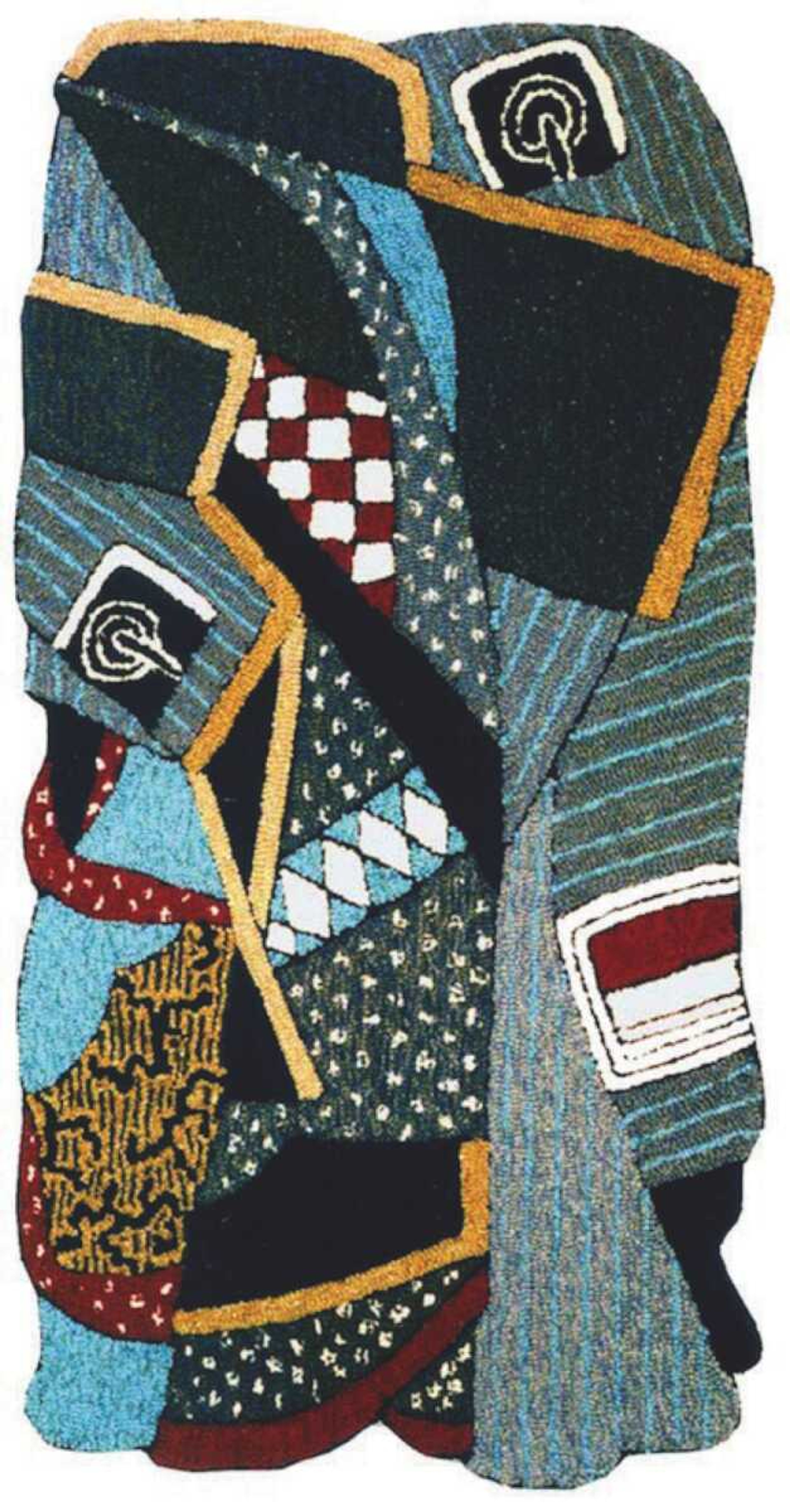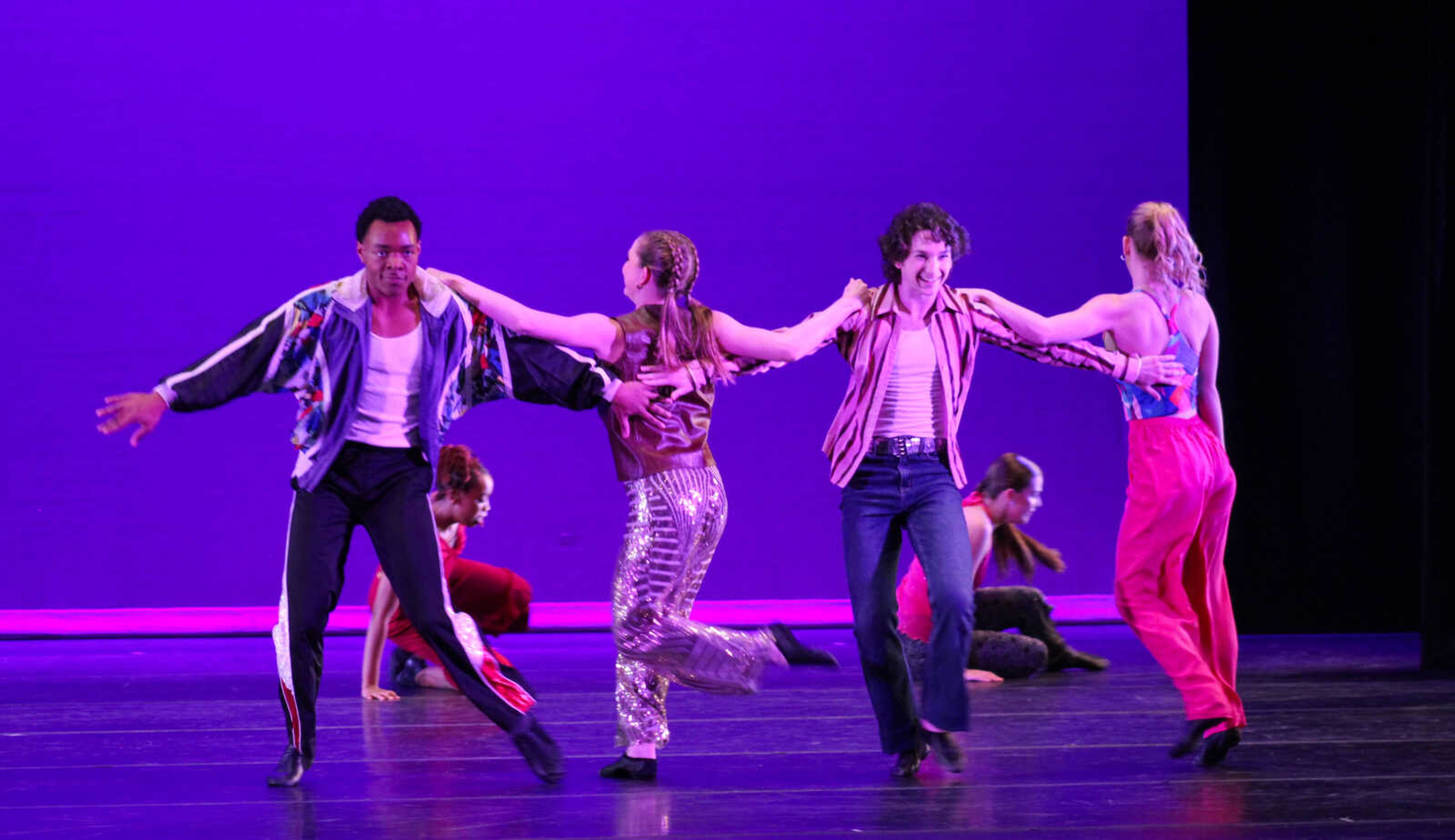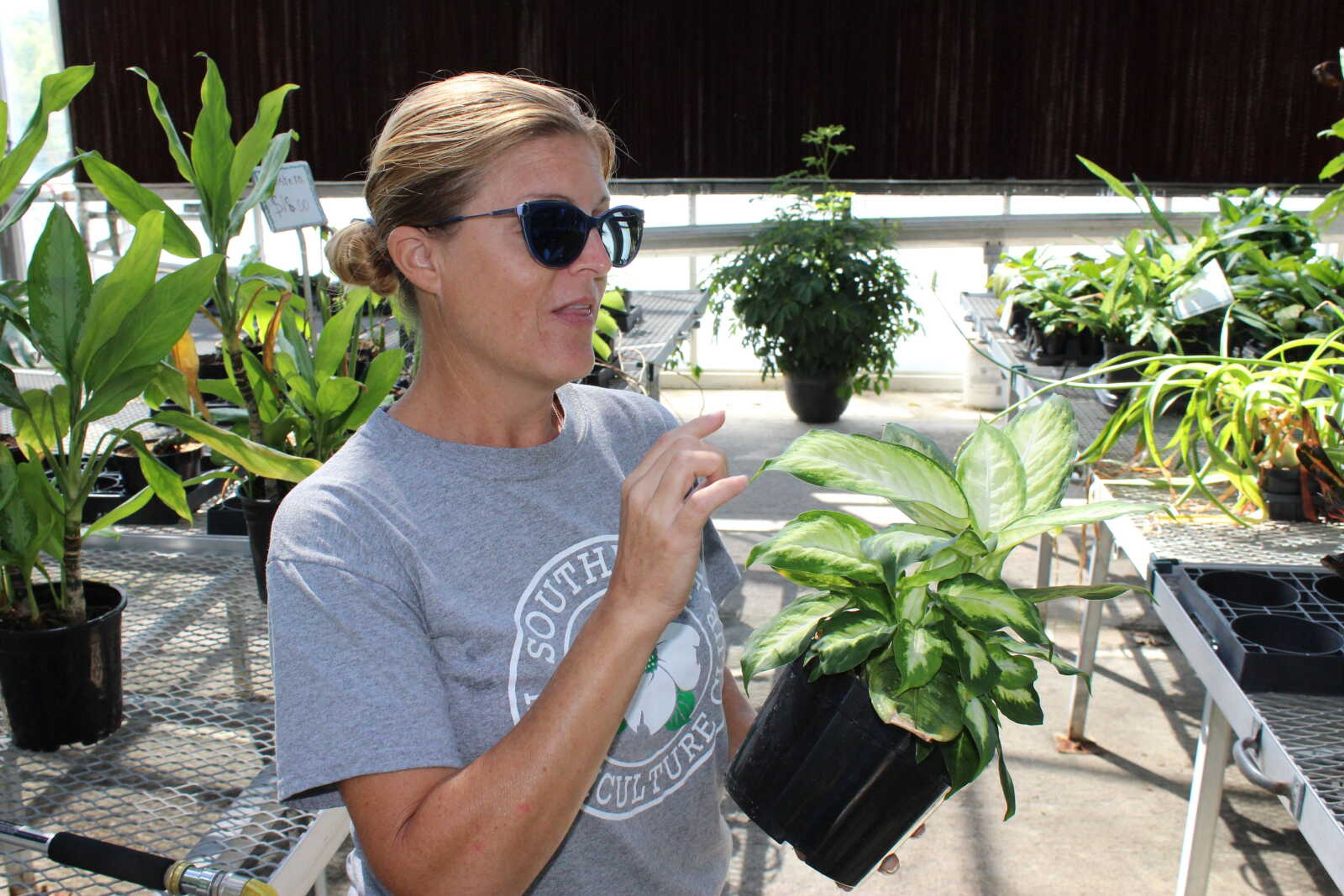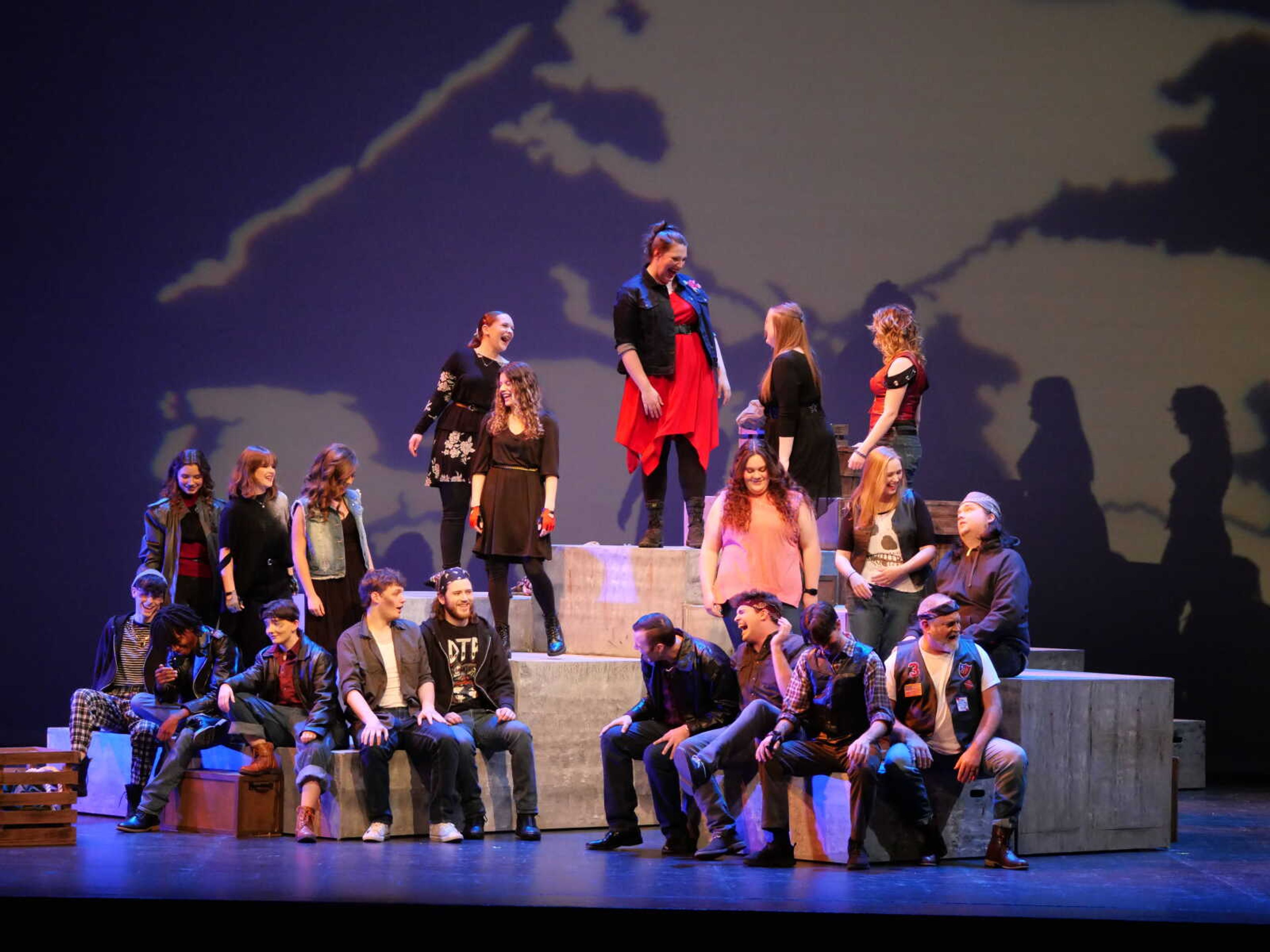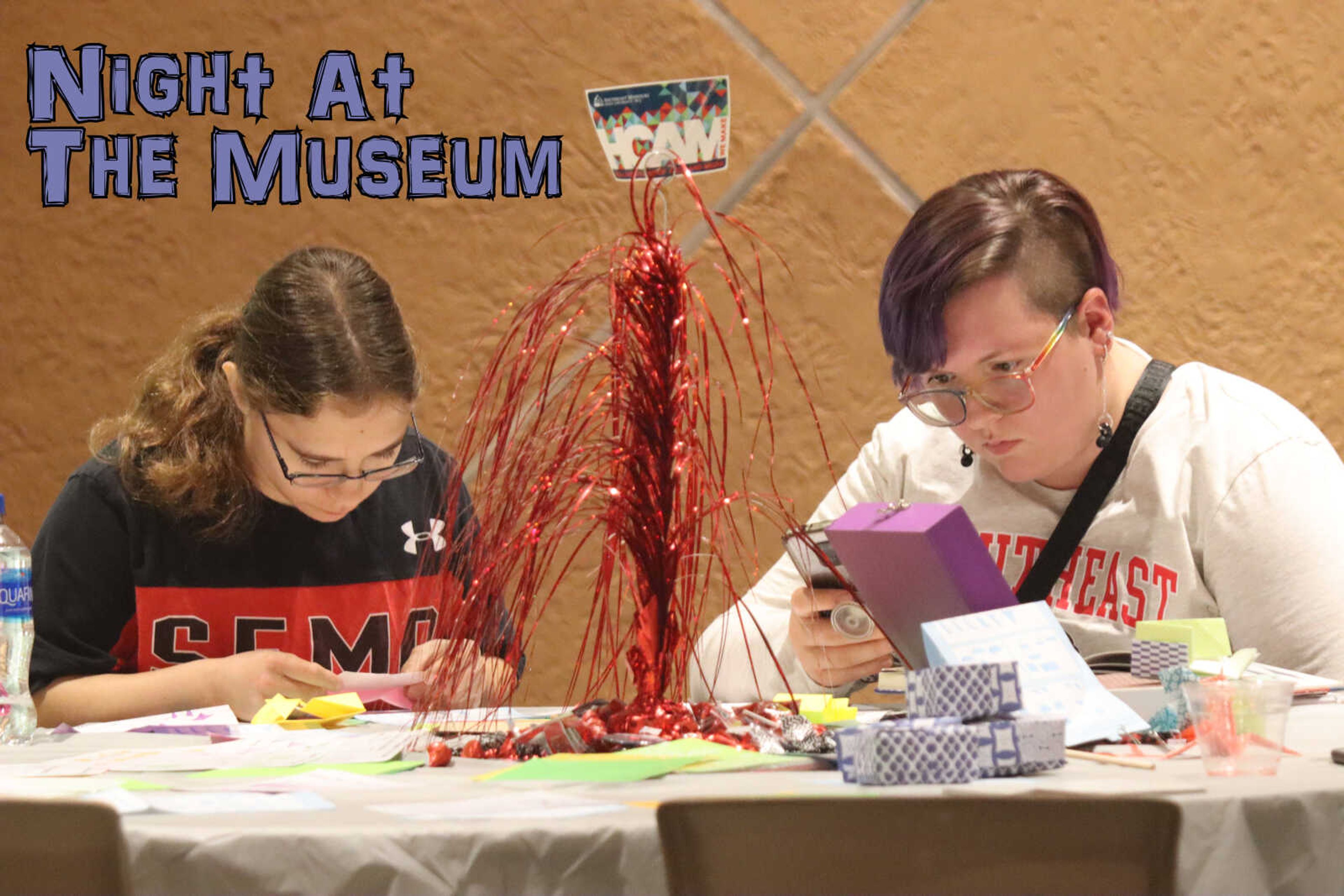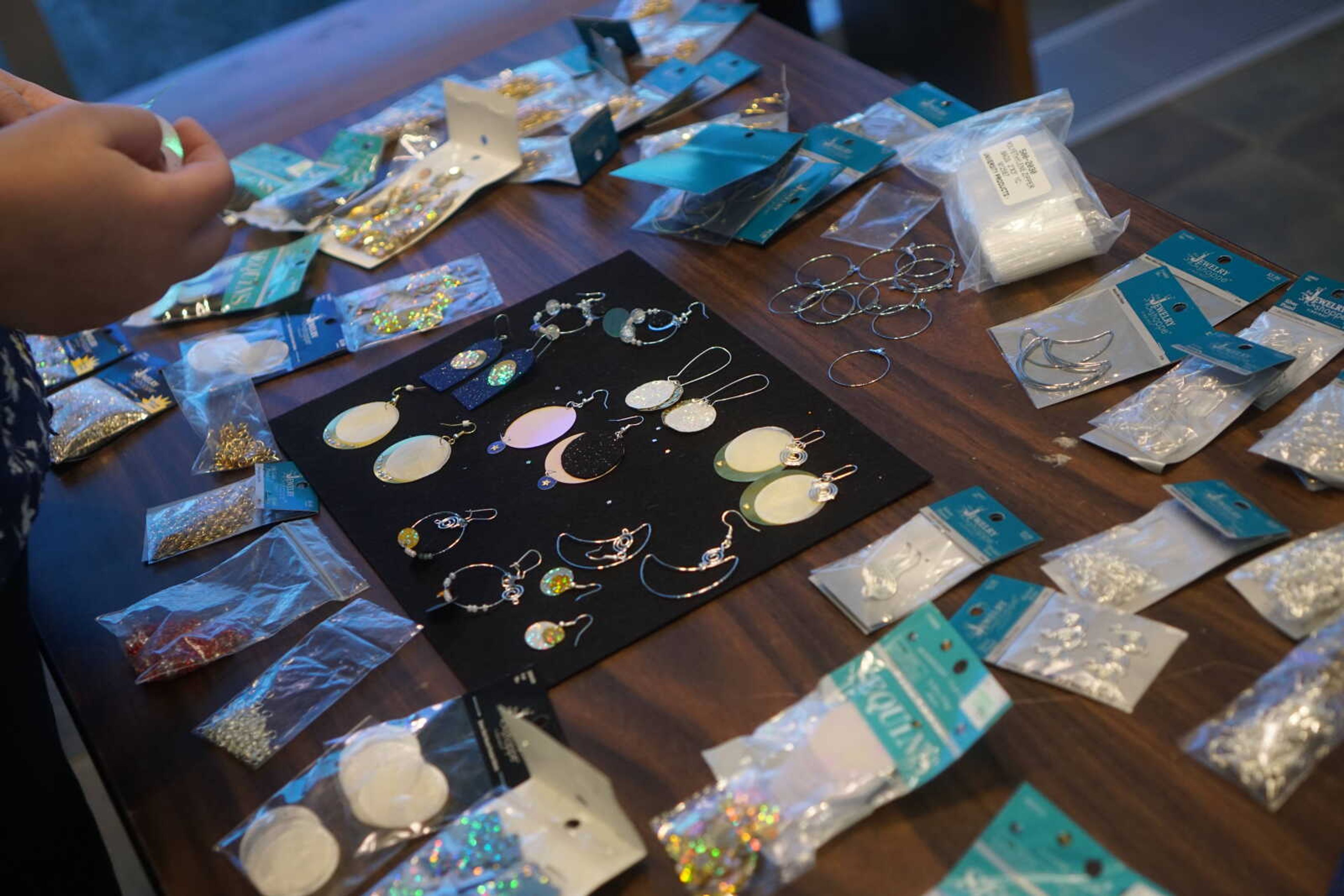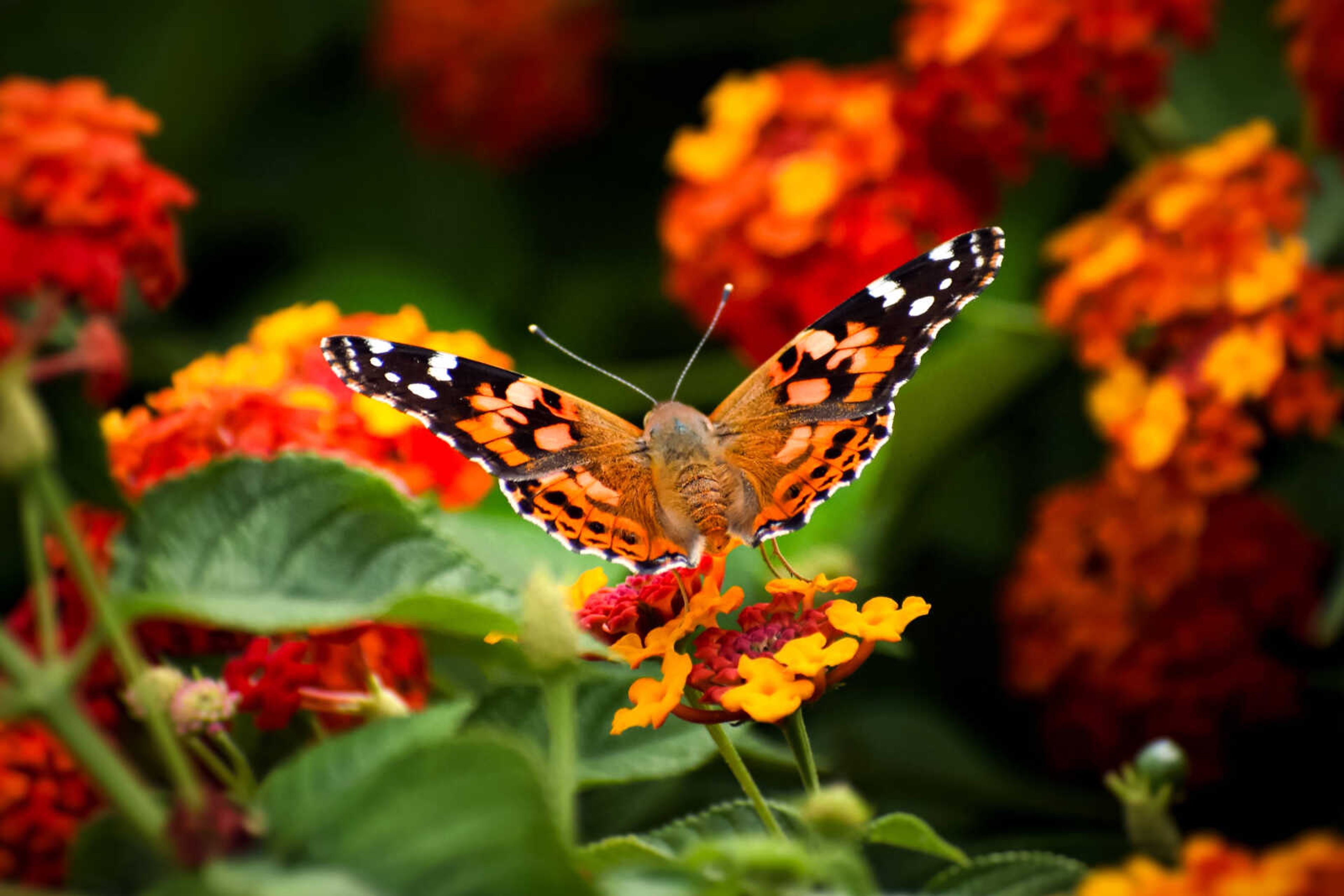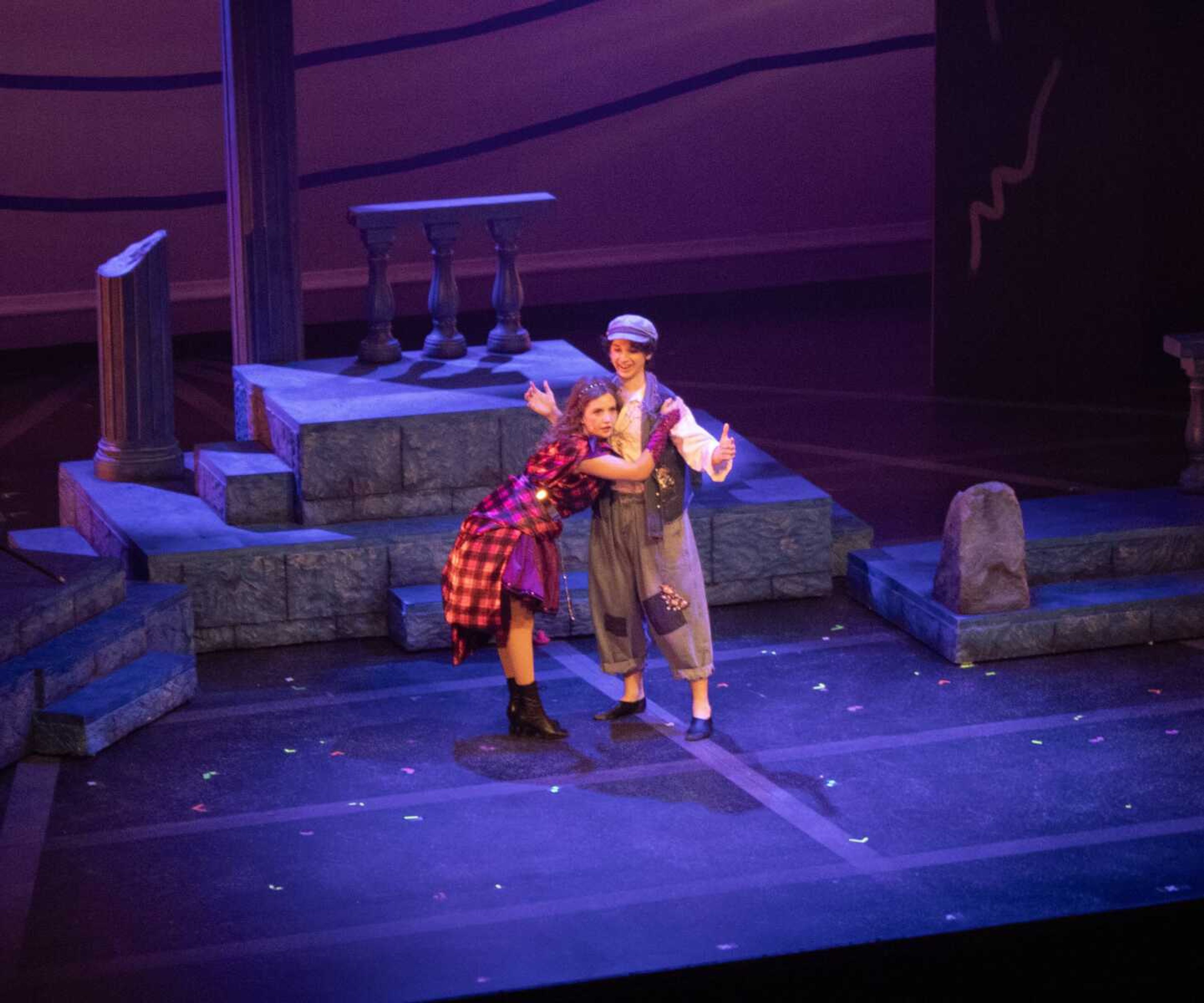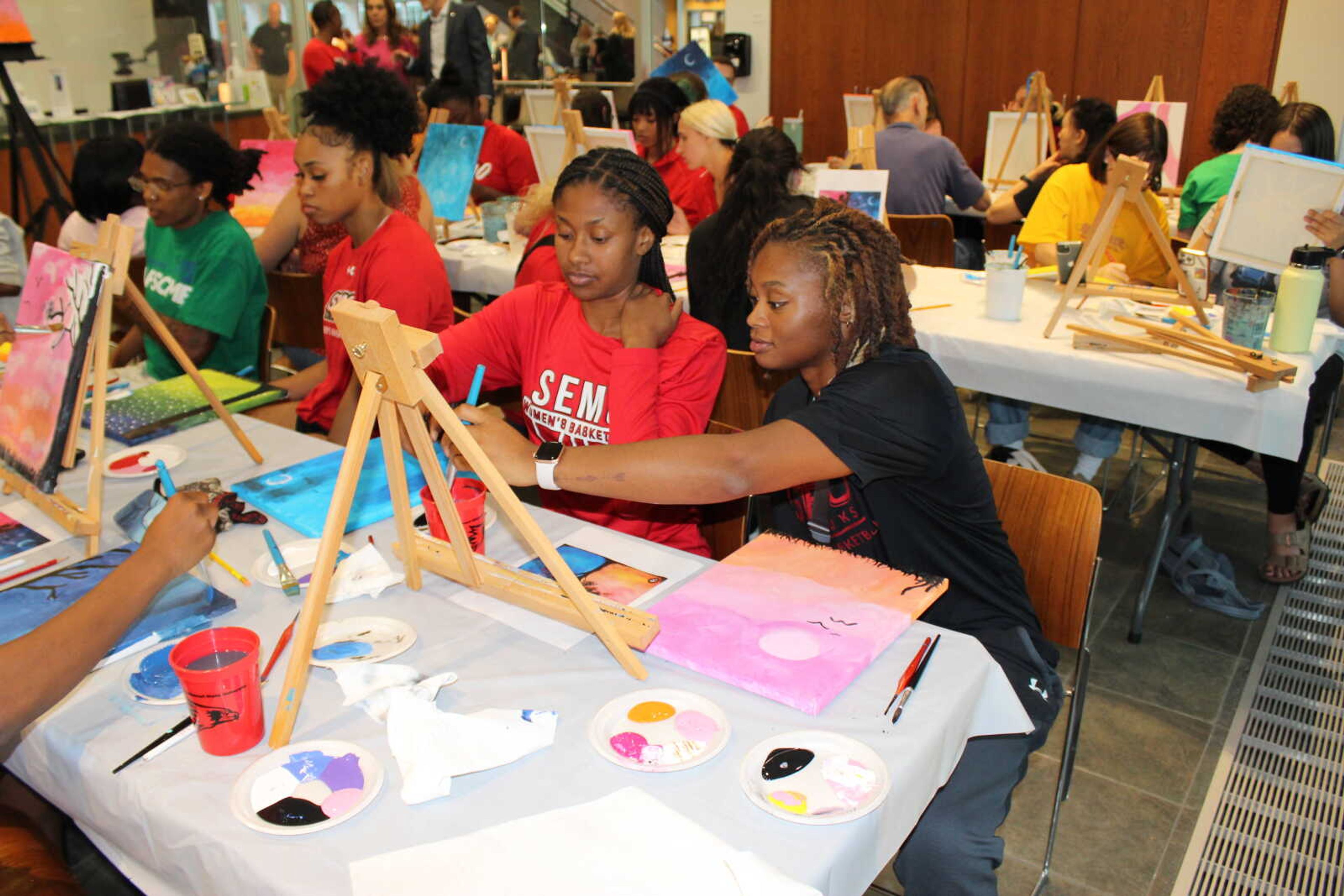Grace Eckert said she's bringing 24 one-of-a-kind handmade rugs created over a span of 24 years for her "Made for Walking" exhibition coming to Southeast Missouri State University's River Campus.
The exhibit will be on display from Sept. 29 to Nov. 15 in the Kenneth and Jeanine Dobbins River Campus Center Hallway Gallery.
Eckert is gallery coordinator and fibers instructor at the University of Tennessee at Martin. Over the years as a professional artist, she's made more than 900 rugs.
Department of Art chair Caroline Kahler met Eckert when Southeast's traveling faculty exhibition "Rock, Paper, Scissors" was displayed at UT Martin for the month of January. Kahler was later invited to come back and hang a reflective show she titled "In the Moment."
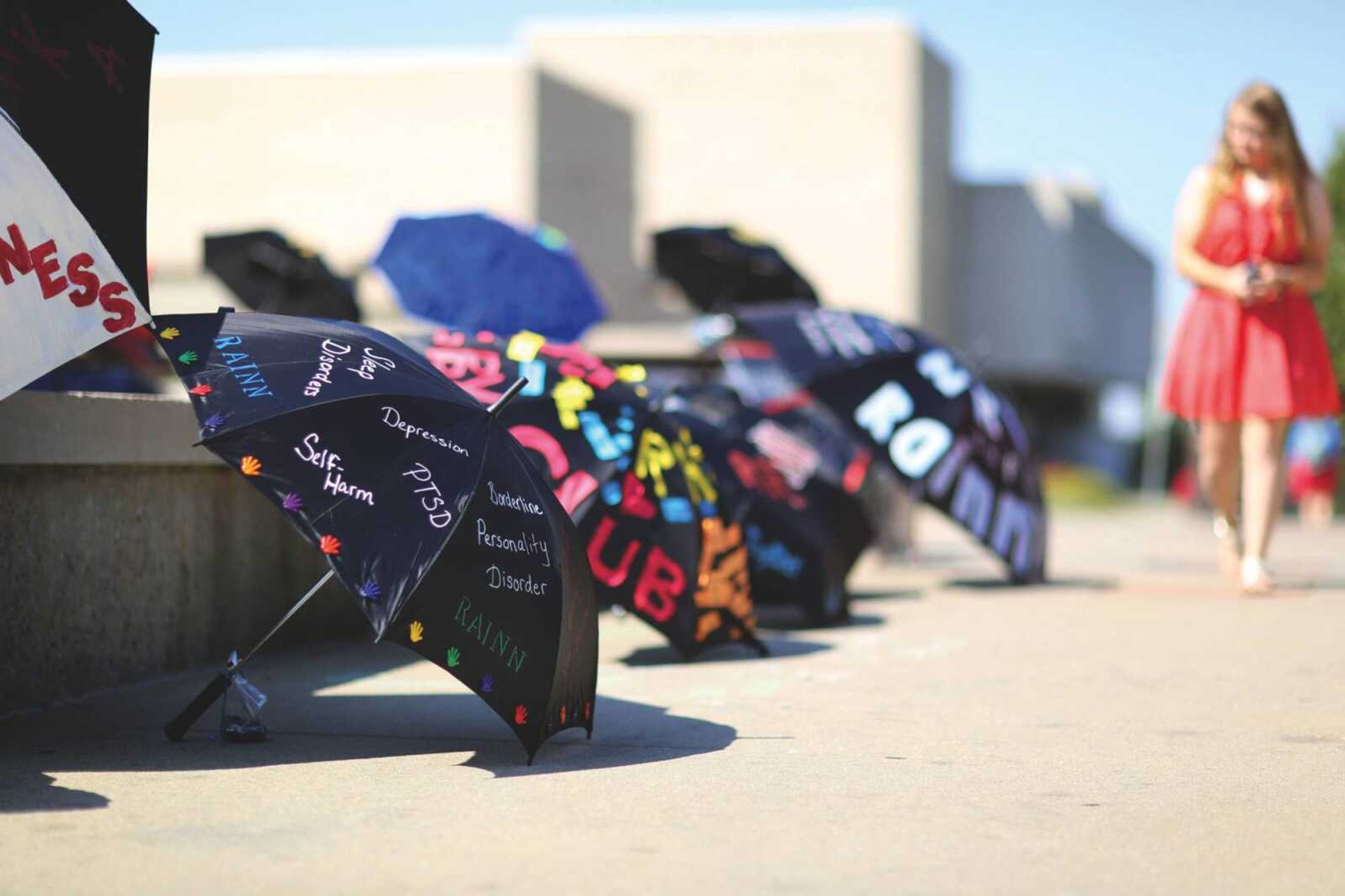
"So I worked very closely with Grace during that time period," Kahler said. "I did a collaborative piece while I was down there in the gallery, and she had her students and she did several pieces that connected into my piece that I had made. So we just became good friends."
Kahler said it partly boiled down to the need to fill the space, but UT Martin made a proposal to show their work at Southeast after hosting the "Rock, Paper, Scissors" exhibition as well.
In an out-in-the-open area without a gallery sitter, Kahler has to find artwork appropriate for all age levels. A secured gallery can be marked for mature audiences, but a hallway is completely open to all public eyes.
For an artist, it also means their work is fully accessible.
"The artists who exhibit there have to be willing to put their work in the space fully knowing that," Kahler said.
Eckert believes her art should be utilized for its purpose anyway.
"I guess the reason I call it 'Made for Walking' is that my only message is that I don't think we should be precious about art," Eckert said. "I think it should be something that we use and live with."
Eckert added that she started making rugs after she realized even she couldn't afford her own tapestry work. She said tapestry work is a laboriously long process and financially expensive. She wanted something she would be able to sell to "real people."
"If someone were to purchase a rug, obviously they could choose to put it on the floor or they could keep it on the wall," Kahler said. "Once you own something, it's yours. It doesn't matter what kind of art it is. It leaves your hands, it's somebody else's. So I think that's an interesting concept."
Eckert's rugs are sewn in a punch needle technique and are loop piled.
"I stretch out the backing, like a canvas really, and I punch the yarn through it from the back," Eckert said. "So it's kind of like painting from the back with yarn."
Her chosen display pieces in "Made for Walking" extend across many series, so a lot of varying themes are presented throughout the work.
"I don't know that there's any particular thing that ties them all together other than a love of color," Eckert said.
She said she never fully stops a series, and as with any artist, her inspiration stems out of her experiences and interests at the time.
With the rugs set to be tacked up in the hallway gallery, Kahler noted the juxtaposition of the concept to the "Made for Walking" title.
Although, rugs and tapestries started on walls.
"It used to be a way to tell stories and also, on big walls in castles and things of that sort, they were there to create a warmth in the space," Kahler said. "So it's not that terribly unusual to have a fiber piece that goes up that way."
Kahler said only one class exists in fibers at Southeast. It's not a concentration within the department. She teaches in accordance with same loomless style Eckert uses so her students can continue to apply the technique outside of her course.
"Part of my idea of how I've been teaching fibers here is to teach things that students can do without a lot of machinery or equipment, try to make that more accessible," Kahler said. "So these are a very accessible kind of medium that anyone could do."
Students don't have to want to create fiber works in their career to learn from the process. Kahler said as a graphic designer, fibers can still be used in something like a book cover.
"One of the things that I really emphasize in my classes is that I want to teach my students crossover skills, that it doesn't matter what the medium is that they're working in, that the things that they've learned they can apply," Kahler said.
To Eckert, enthusiasm makes the artist.
"There's no point in being an artist unless you have a passion to make things, a passion to express yourself, a passion to speak to people visually," Eckert said.
